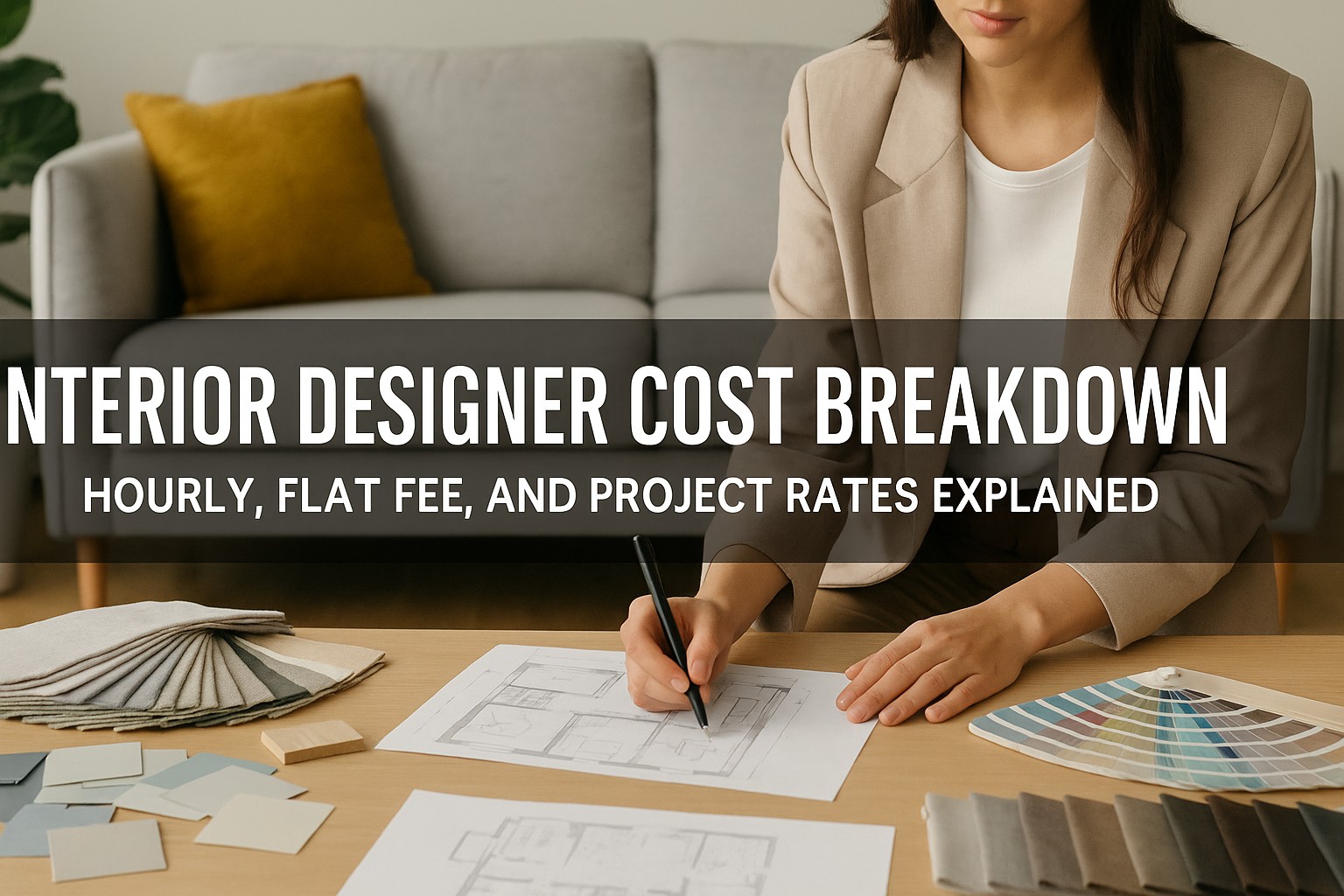Hiring an interior designer helps transform your home into a stylish and functional space. Many people hesitate because they think it costs too much. Others don’t know what designers actually do or how fees work.
Interior design costs vary widely. The total depends on your location, the size of the project, and the designer’s experience. Some designers charge by the hour. Others charge a flat rate. This guide breaks down the options. It also explains how to save money and what to expect at every step.
Why Hire an Interior Designer?
A designer does more than pick paint colors or furniture. They create a full plan. They make sure your space works well and looks good. And they help avoid costly mistakes. Designers also have access to products and tradespeople that the public can’t always reach.
Hiring a designer saves time. You avoid guesswork. You get a clear design, a timeline, and a result that matches your taste and lifestyle.
If you plan to sell your home, a well-designed interior can increase value. Buyers often notice quality layouts and clean finishes. A good design adds to your home’s market appeal.
Interior Designer Fee Structures Explained
Hourly Rate
Most designers charge between $100 and $300 per hour. In high-cost areas like New York or Los Angeles, it may go higher. This model works best for small projects or consultations.
You pay only for the time the designer works. This includes shopping, planning, or meetings. Some charge for travel or phone calls too. Ask for a time log to track hours and avoid surprises.
Flat Fee
Flat fees apply to full-room or full-home designs. Rates range from $1,500 to $12,000 or more, depending on the project size. This option helps you plan your budget.
Designers base the flat rate on how much work they expect. They consider square footage, number of rooms, and design needs. You get one cost up front, often paid in parts.
Percentage of Project
Some designers take 10% to 30% of your total project budget. If your renovation costs $50,000, the design fee could range from $5,000 to $15,000.
This fee model works well for large remodels. The designer’s pay matches the project’s scope. Make sure you agree on what counts toward the total cost. Learn more about design pricing at Decorilla.
What Factors Affect Interior Design Costs?
The size of your home matters. A single room costs far less than a whole house. A kitchen or bathroom costs more than a hallway or home office.
The scope also matters. A full redesign with custom furniture takes more time and money than a quick update.
Your location plays a big role. Designers in major cities often charge more. Rural or smaller markets may have lower rates.
Your style choice impacts cost too. Minimal designs need fewer items. Bold or luxury looks need custom work and more time.
Designer experience raises the rate. New designers charge less. Top professionals with large portfolios charge more, but they often deliver faster and more polished results.
What’s Included in the Fee?
Every designer works differently. Most fees include layout planning, mood boards, and product sourcing. Some include visits to your home or 3D renderings. Others offer basic sketches or furniture suggestions.
Installation and contractor management may cost extra. You might pay more if the designer oversees carpenters, painters, or electricians. Some designers offer full project management for an added cost.
Ask for a written list. This shows what the fee covers and what counts as extra. Clear terms avoid confusion and added costs later.
How to Save Money on Interior Design
Hire a designer for just one part of your home. Focus on high-impact areas like the living room or kitchen. These rooms set the tone for your house and increase its value.
Choose an hourly consult. Get help choosing colors, layouts, or furniture. Then do the rest yourself. Many designers offer one-time consults for under $500.
Buy furniture and decor on your own. Ask the designer for a shopping list, and place the orders yourself. This avoids markup fees.
Pick a designer who offers package deals. Some bundle services like layout, sourcing, and planning for a single price.
Use online design platforms. Many offer virtual services at lower prices. Sites like Modsy and Havenly cost far less than in-person designers.
Tips Before You Hire an Interior Designer
Start with a budget. Know how much you can spend. Include design, labor, and materials in your estimate.
Meet with more than one designer. Ask about experience, style, and rates. Request a sample plan or look at past projects.
Get everything in writing. Ask for a contract. It should list services, payment terms, and timeline. This protects both sides.
Stay involved. Check in often. Ask questions. Review progress. Good designers welcome your feedback and adjust as needed.
Avoid hourly fees if your project may stretch over weeks. A flat rate or project fee often saves more in the long run.
FAQs
Is it worth paying for an interior designer?
A designer helps avoid costly mistakes, improves layout, and raises home value. You save time and reduce waste.
Do designers charge for initial meetings?
Some offer free first calls. Others charge a small fee for the first visit. Always ask in advance.
Can I hire a designer just for advice?
Many offer hourly consults. You can get layout help, style ideas, or color advice in one visit.
How do I check if a designer is legit?
Look at reviews, websites, or social profiles. Ask for a portfolio and client references.
Do interior designers get discounts?
Many have access to trade-only deals. Some pass savings to clients. Others keep the discount as part of their pay.’
Read Next: Dickey Funeral Home Obituaries in Laredo, TX – What Families Should Know

